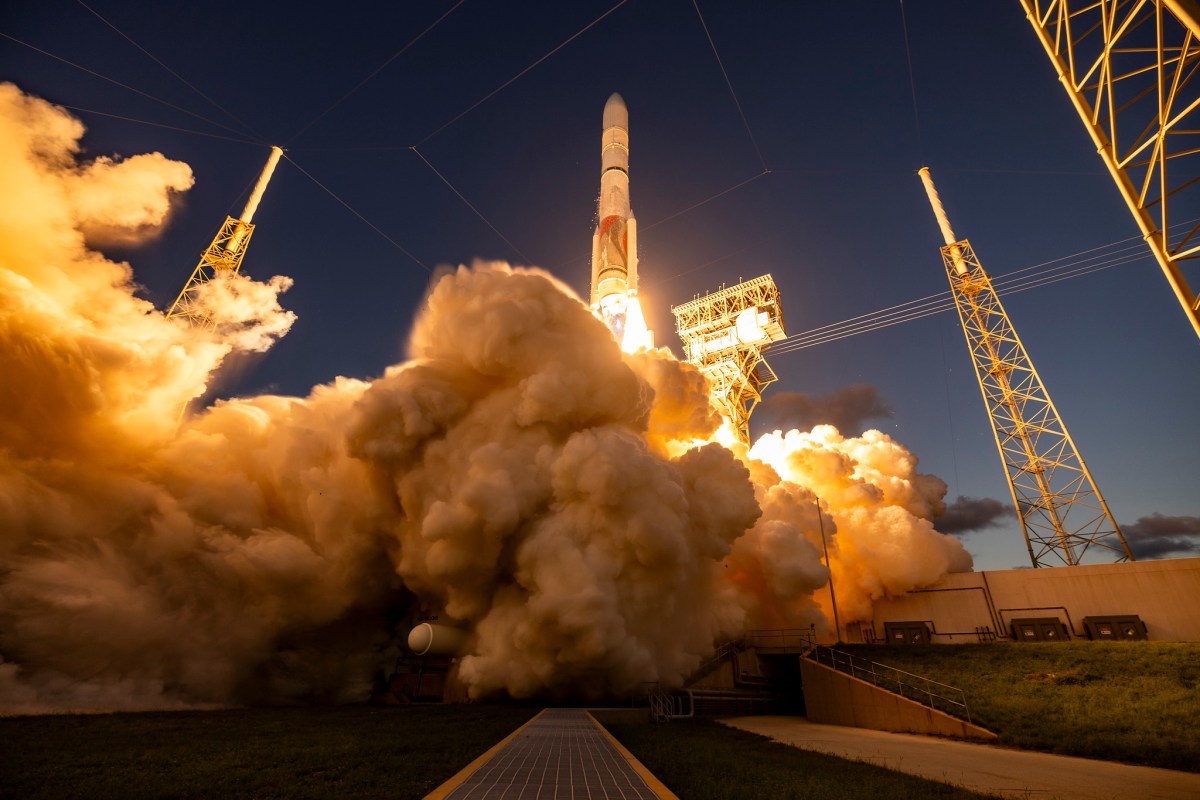MILAN — The loss of a solid rocket booster nozzle on the second flight of the Vulcan Centaur had very little effect on the launch itself, but the impact of the incident on the vehicle’s certification by the Space Force remains uncertain.
On the Cert-2 launch Oct. 4, the nozzle of one of the two SRBs attached to the core stage of Vulcan came off about 35 seconds after liftoff. The incident, called an “observation” by United Launch Alliance, appeared to have a momentary effect on the vehicle, but it continued its ascent, with the timing of subsequent events falling behind the published timeline by up to 20 seconds.
In a talk at the International Astronautical Congress here Oct. 14, Tory Bruno, chief executive of ULA, said the incident only caused a small loss of performance. “The net effect of that was less than 2% of the total impulse of the booster,” he said, the motor continuing to fire but with reduced efficiency because of the lack of a nozzle.
The nozzle did not affect the motor itself or jeopardize the overall vehicle, he added. “We just did not have as much thrust coming out of there as we would like to have.”
The core stage made up for the loss of performance from the SRB, including steering from the BE-4 engines to compensate for the asymmetrical thrust between the two SRBs. “This was less than the liquid propellant reserves in the core stage,” he said. “Vulcan is a beast.”
That was demonstrated in the final performance of the vehicle and the accuracy of its orbital injection. Bruno said engineers are still analyzing the data from the flight and comparing them to previous ULA launches, “but I’m pretty sure that’s our most accurate injection yet.”
What caused the nozzle to come off is still under investigation, he said, stating that nothing like that has been seen in 35 firings of the GEM 63 motors and several of the larger GEM 36XL used on Vulcan.
Any changes to the nozzle, he said, should be straightforward to make on the 35 GEM 63XL motors in storage for future Vulcan launches, since the nozzle section is bolted on. “I’m pretty confident, having experienced this type of anomaly more than once in my career, that we’ll get to the bottom of this pretty quickly and move on.”
“We still had a very, very successful mission,” he concluded, “probably one of the most successful missions we’ve flown.”
What is less certain is how the anomaly will affect plans for certification of Vulcan Centaur by the U.S. Space Force. The Cert-2 mission was the second of two Vulcan launches needed to obtain that certification needed for national security launches. Before Cert-2, ULA hoped to obtain that certification in time to perform the first two such launches before the end of the year.
Bruno declined to speculate on any changes in the schedule for certification when asked about it after his presentation. That process, he said, is in the hands of the Space Force, which has not publicly commented on a timeline for certification.
“That will be something we work together on with our Space Force customer,” he said, with its personnel embedded with ULA teams reviewing data from the launch. “I hope that will aid them in doing their part of certification.”
